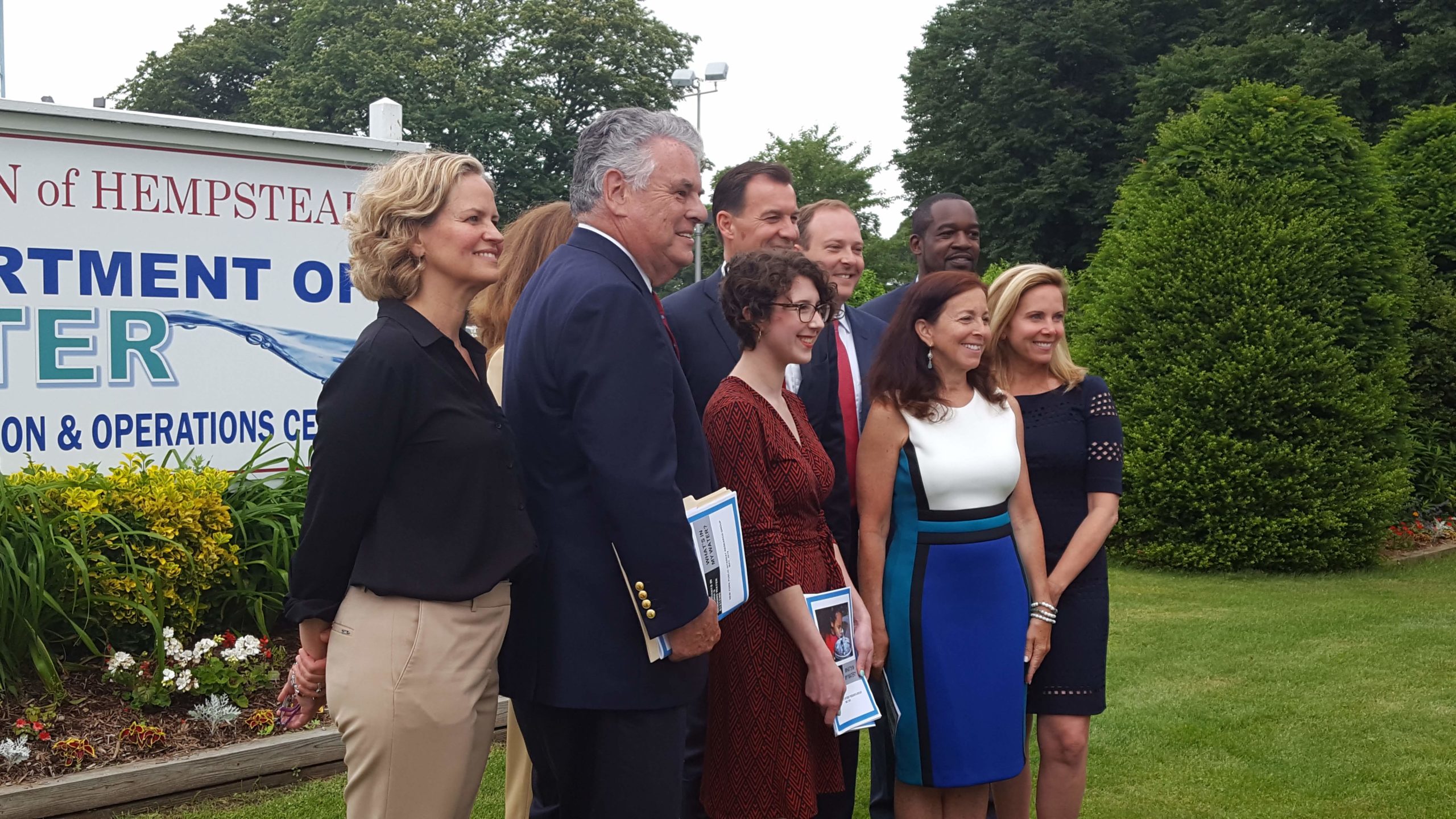Long Island politicians across party lines are jointly urging the U.S. Environmental Protection Agency to set drinking water standards for contaminants after a recent New York Public Interest Research Group report that said Long Island has the worst drinking water in the state.
A June 7 letter signed by U.S. Reps. Kathleen Rice (D-Garden City), Tom Suozzi (D-Glen Cove), Peter King (R-Seaford) and Lee Zeldin (R-Shirley) calls on the agency to set a national standard for maximum contaminant levels of chemicals such as 1,4-dioxane, which the EPA says is likely a carcinogen.
It also requests financial assistance for Long Island water providers as they tackle the issue.
“The contamination’s extensive,” King said at a Tuesday news conference. “It’s real.”
The EPA has not yet responded to the letter, Rice said.
Emerging contaminants that have been detected in Long Island water include 1,4-dioxane, perfluorooctane sulfonic acid (PFOs) and perfluorooctanoic acid (PFAs). All three remain unregulated in New York, but the state Department of Health is developing standards that Gov. Andrew Cuomo told Newsday will be released in “a matter of weeks.” There are no national standards.
The New York drinking water report released in May said 1,4-dioxane was detected in 34 Long Island water systems, nearly seven times more than in the Hudson Valley, which had the second highest number of detections.
“The existence of these contaminants should be of concern, and how officials act to protect the public should be the driving factor in whether consumers should be alarmed,” it said.
In December, nine Nassau County water districts sued three companies that have a history of industrial work on Long Island. Manhasset-Lakeville Water District joined them in January. It is an effort to have parties responsible for contamination pay for the cleanup, said Paul Schrader, superintendent of the Manhasset-Lakeville Water District.
The Port Washington Water District recently reported a 1,4-dioxane quantity in one of its wells that exceeded the maximum recommended amount.
“People don’t like it when I say we have a drinking water crisis because they’re afraid of scaring the public but there’s a difference between scaring the public and informing the public,” Adrienne Esposito, Citizens Campaign for the Environment executive director, said at the news conference. “The credit is deserved to this bipartisan group of elected officials who are not afraid to talk about this issue.”



